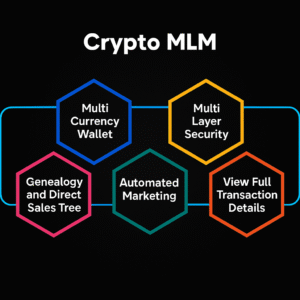
Central Bank Digital Currencies (CBDCs) are rapidly moving from theoretical discussions into real-world pilots and implementations. With over 100 central banks actively exploring digital currencies, the role of crypto exchanges is transforming. These platforms, once focused primarily on trading volatile assets like Bitcoin and Ethereum, are now positioned to integrate CBDCs into their ecosystems. This evolution creates new opportunities but also raises significant technical and regulatory challenges.
In this blog, we will explore how CBDCs are reshaping crypto exchanges, analyze different exchange models, and highlight specific industry use cases where CBDCs can coexist with decentralized protocols.
The New Paradigm of CBDCs and Exchanges
Central Bank Digital Currencies (CBDCs) are government-backed digital assets issued and regulated by national central banks. Unlike volatile cryptocurrencies, CBDCs maintain stability by being directly tied to a sovereign fiat currency. When integrated into cryptocurrency exchange infrastructures, they bring several advantages that can transform trading operations.
For instance, CBDCs can serve as stable liquidity pools, offering a dependable base pair for digital asset transactions. They also help reduce settlement risk, as central bank-backed transactions can be completed faster and with greater trust. Additionally, exchanges that incorporate CBDCs may find it easier to align with regulatory requirements, potentially leading to quicker approvals from authorities. Collectively, these benefits can influence how exchanges structure their order-matching systems, enhance compliance frameworks, and optimize liquidity engines for a more secure and efficient trading environment.
Use Case 1: CBDC Integration in Traditional Centralized Models
Traditional platforms remain dominant due to their high throughput, institutional-grade security, and user-friendly interfaces. The adoption of CBDCs will likely accelerate demand for centralised exchange development projects.
- Settlement Efficiency: By integrating CBDCs into internal ledgers, centralized exchanges can streamline fiat-to-crypto gateways.
- KYC/AML Automation: Central bank-issued digital IDs attached to CBDCs can automate user verification.
- Cross-Border Transactions: CBDC-pegged stable pairs allow seamless international remittances without reliance on volatile stablecoins.
For developers, this requires upgrading core systems to handle CBDC APIs, programmable settlement logic, and regulatory reporting modules.
Use Case 2: Peer-to-Peer Settlements in Emerging Markets
Not all markets rely on centralized custody. In many regions, peer-to-peer trading is the most practical approach due to regulatory restrictions or limited banking access. Here, cryptocurrency P2P exchange models can incorporate CBDCs for direct user settlements.
- Direct Transfers: Users can trade digital assets directly with CBDCs, eliminating intermediaries.
- Escrow Smart Contracts: CBDCs integrated into smart contracts enhance trust in P2P deals.
- Financial Inclusion: Emerging economies can bypass traditional banks by enabling direct CBDC P2P trading.
This model creates strong use cases in regions with unbanked populations, where P2P systems combined with CBDCs can serve as a digital-first financial infrastructure.
Use Case 3: Liquidity Stability in AMM Protocols
Decentralized exchanges powered by Automated Market Makers (AMMs) will also evolve as CBDCs enter the digital economy. In an AMM decentralized exchange, liquidity pools are critical for price discovery and continuous trading. With CBDCs, these pools gain added stability:
- Stable Base Liquidity: CBDC pairs can reduce impermanent loss risks in AMM pools.
- Programmable Monetary Policy: Central banks can issue CBDCs with smart contract hooks, directly influencing liquidity strategies.
- Compliance by Design: AMM platforms could implement whitelisted CBDC contracts, ensuring regulatory compatibility.
These CBDC-AMM integrations provide strong potential for hybrid finance models, combining central bank-backed assets with decentralized liquidity mechanics.
Use Case 4: Institutional-Grade Trading with Order Book Protocols
Institutions prefer precision trading mechanisms such as order books rather than AMM pools. With CBDCs, the order book DEX platform model gains additional relevance.
- Deep Liquidity Pairing: CBDC pairs provide trusted liquidity anchors for institutional-grade trading.
- High-Frequency Trading: With programmable CBDC settlement, order book DEXs can achieve near-centralized speed while retaining decentralization.
- Cross-Chain Interoperability: Order book DEXs integrated with CBDCs can facilitate seamless on-chain/off-chain liquidity routing.
For institutional adoption, order book systems with CBDCs provide the perfect balance between compliance and decentralization.
Regulatory Implications for Exchanges
Integrating CBDCs is not only a technical challenge but also a regulatory transformation:
- Compliance Automation: CBDCs can carry transaction metadata that exchanges can use for AML and fraud detection.
- Licensing Opportunities: Exchanges that pioneer CBDC adoption may gain regulatory priority.
- Risk Reduction: CBDCs eliminate the counterparty risk associated with privately issued stablecoins.
This regulatory clarity may encourage more institutional players to enter digital asset markets.
Technical Challenges Ahead
While the potential is massive, exchanges must solve multiple technical hurdles:
- Scalability: CBDC blockchains must handle exchange-level transaction loads.
- Privacy vs. Transparency: Exchanges must balance state-mandated traceability with user privacy.
- Interoperability: CBDCs across different nations must be exchangeable through cross-chain bridges.
- Upgradability: Core exchange systems must adapt to evolving CBDC protocols over time.
Developers working on CBDC-ready infrastructure must anticipate frequent protocol updates and maintain modular system designs.
Real-World Industry Applications
- Cross-Border Payments: Exchanges act as intermediaries between CBDCs from different jurisdictions, enabling real-time forex settlement.
- Digital Bond Settlement: CBDC pairs can be used for on-chain bond issuance and redemption, with exchanges providing secondary trading venues.
- Corporate Treasury: Businesses may rely on exchanges to convert CBDCs into crypto assets for diversified treasury management.
- Retail Banking Extensions: Exchanges can become financial gateways, offering retail CBDC services alongside crypto assets.
These industry use cases show that CBDCs will not replace exchanges but transform their purpose.
Conclusion
The rise of CBDCs marks a turning point for crypto exchanges. Instead of competing with state-backed digital currencies, exchanges are evolving to integrate them. From centralised exchange development to cryptocurrency P2P exchange, from AMM decentralized exchange to order book DEX platform, each architecture gains new relevance in the CBDC era.
The future of exchanges lies in creating hybrid infrastructures where CBDCs coexist with cryptocurrencies, AMMs, and order book systems. By adopting innovative settlement protocols, regulatory frameworks, and interoperability layers, exchanges will position themselves at the center of the digital economy.







